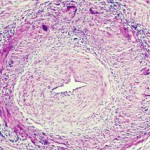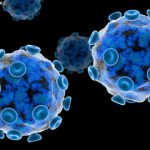The investigators then took every section of each VZV antigen-positive TA and extracted the DNA. Despite the fact that the TA samples were formalin fixed, the researchers found VZV DNA in two of four GCA-positive, VZV antigen-positive TAs. They also found skeletal muscle attached to three of four TAs. When they analyzed the skeletal muscle, they found that two stained positive for VZV antigen and one was positive for VZV DNA.
The preliminary results suggest that antiviral agents could be combined with corticosteroids to treat GCA as a VZV-induced immunopathological disorder.
ad goes here:advert-1
ADVERTISEMENT
SCROLL TO CONTINUE
Lara C. Pullen, PhD, is a medical writer based in the Chicago area.
References
ad goes here:advert-2
ADVERTISEMENT
SCROLL TO CONTINUE
- Gilden D, Nagel M. Varicella zoster virus in temporal arteries of patients with giant cell arteritis. J Infect Dis. 2015 Jul 15;212 Suppl 1:S37–39. doi: 10.1093/infdis/jiu542.
- 2. Nagel M, Gilden D. Update on varicella zoster virus vasculopathy. Curr Infect Dis Rep. 2014 June;16(6):407. doi:10.1007/s11908-014-0407-z


